In the digital age, it is more important than ever for businesses to get leads. With so many potential customers online, it is important to use the right tools and strategies to draw them in and turn them into paying customers. One of the best ways to do this is with Google Ads, which helps businesses reach their ideal customers and get high-quality leads. But not all Google Ads campaigns are the same, and making one that works takes knowledge and skill. This full guide will teach you everything you need to know, from the basics to more advanced techniques, to how to use Google Ads for lead generation to get high-quality B2B leads.
How to Tell if Google Ads are Working for B2B Marketing
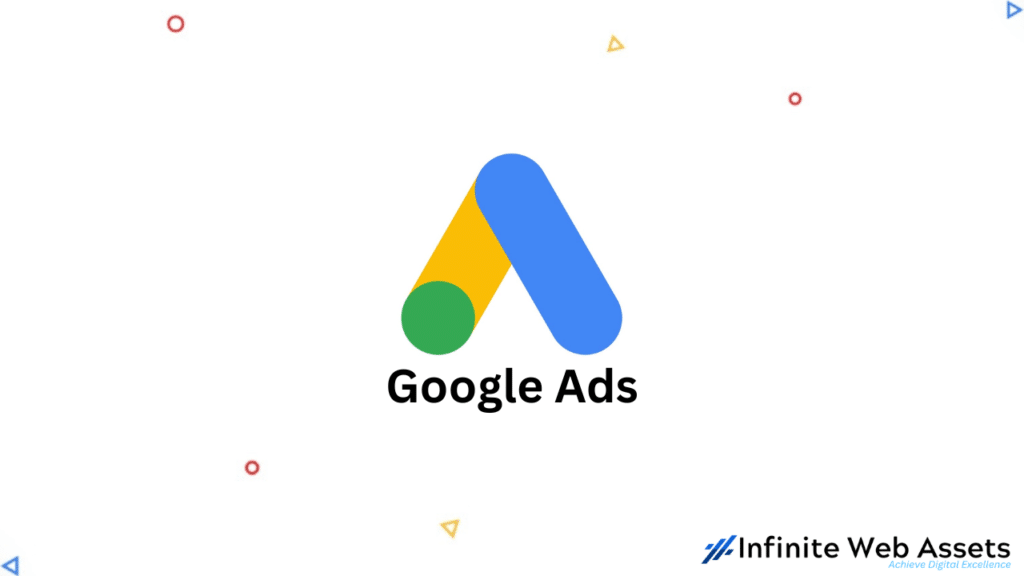
Google Ads lets you do a lot of different kinds of targeting, which makes it a great choice for B2B marketing. Google Ads can help businesses get more leads, improve the quality of those leads, and increase sales and revenue when used in a smart way.
Exploring the Role of Google Ads in B2B Lead Generation
Google Ads provides a variety of targeting capabilities, which makes it an excellent choice for B2B marketing. When used strategically, Google Ads can help businesses generate more leads, enhance the quality of the leads, and ultimately drive sales and revenue growth.
Why Businesses Invest in Google Ads for B2B Marketing
Here are some of the reasons companies use Google Ads for B2B marketing:
- Google’s huge network gives it a wide reach: Google is the most used search engine in the world, with billions of users. This gives businesses access to a large network of possible customers, making it a good place for B2B marketing. With Google Ads, businesses can reach customers all over the world, or they can target specific places, languages, or devices to reach their ideal customers.
- Advanced targeting options: Google Ads lets businesses reach the right people with their ads by giving them a number of advanced targeting options. Businesses can reach the right people through B2B marketing by using keywords, demographics, and interests, among other ways to narrow down their audience. They can also target users based on the search terms they use, their location, the type of device they are using, and the websites they visit.
- Ability to tweak campaigns and easily measure how well they work: Google Ads gives businesses a number of tools to help them improve their campaigns and track how well they are doing. Businesses can keep track of their ads’ clicks, impressions, and conversion rates with this platform. This data gives businesses useful information about what is working and what is not, so they can make smart choices about their campaigns and improve their results over time.
- Flexible budgets and bidding strategies: Google Ads is a flexible platform that gives businesses the freedom to set their own budgets and bidding strategies. Businesses can choose to pay for clicks, impressions, or conversions and set their budget based on their marketing goals and budget. They can also use different bidding strategies to reach their target audience in the most cost-effective way, such as manual bidding, automatic bidding, and enhanced cost-per-click bidding.
Key Differences between B2B and B2C Google Ads Campaigns
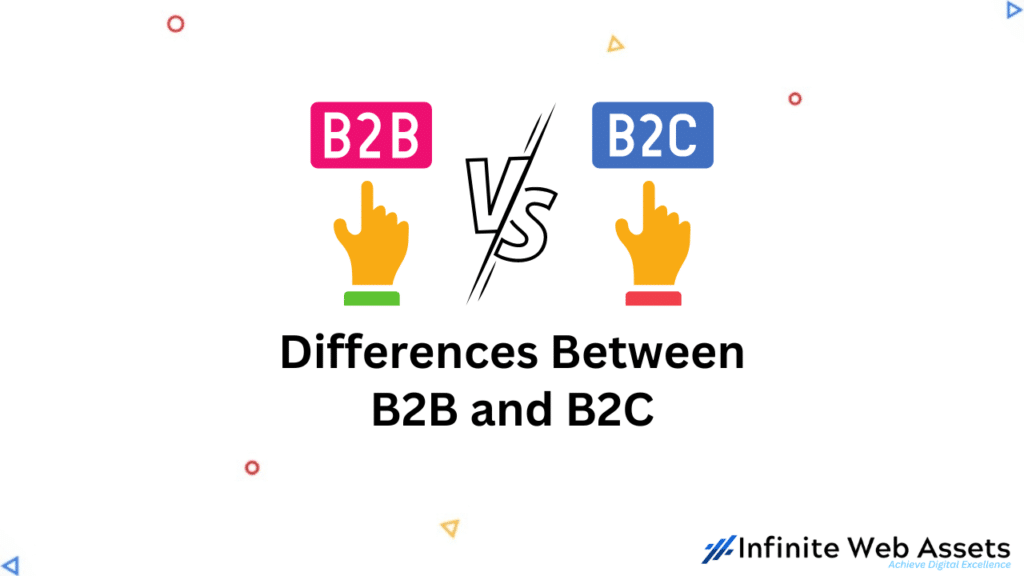
Even though Google Ads works the same way for all types of businesses, Business-to-Business (B2B) and Business-to-Consumer (B2C) campaigns often use very different strategies and tactics. Understanding the main differences between business-to-business (B2B) and business-to-consumer (B2C) Google Ads campaigns is important if you want to reach and engage potential customers.
- Target audience: The target audience is one of the most important differences between B2B and B2C campaigns. B2B campaigns are made for other businesses, while B2C campaigns are made for individuals. This difference in audience affects many other parts of a campaign’s strategy, such as choosing keywords, writing ads, and bidding.
- Sales cycle: In general, the sales cycle for B2B campaigns is longer and more complicated than that for B2C campaigns. When making decisions for B2B, there are often a lot of people involved, budget concerns, and a lot of research. So, B2B campaigns need to focus on getting leads and keeping them interested as they move through the sales funnel, while B2C campaigns can try to convert people right away.
- Keywords: B2B campaigns often focus on keywords that are specific to their industry or niche that show how specialized their products or services are. Even though these keywords may be searched for less often, they are often used with high commercial intent. B2C campaigns, on the other hand, tend to focus on broader, more popular keywords that appeal to a larger audience. These differences need to be taken into account in the keyword strategies for each type of campaign.
- Ad copy and messaging: Ad copy for business-to-business (B2B) needs to address the needs, problems, and interests of a business audience. This could mean putting more focus on saving money, being efficient, or getting a good return on investment (ROI). On the other hand, B2C ad copy should focus on the emotional and personal benefits of a product or service, like how convenient, stylish, or fun it is. To write persuasive and relevant ad copy, you need to have a clear idea of who the ads are for.
- Landing pages and conversion optimization: Since B2B sales cycles are longer, landing pages should be made to gather leads instead of trying to convert people right away. This could mean giving away useful content like whitepapers or webinars in exchange for contact information. On the other hand, B2C landing pages should be designed to make it easy and quick to buy or convert, with clear calls to action and few barriers.
- Bid strategies and budgets: B2B campaigns may need bigger budgets because niche, high-intent keywords have a higher cost per click (CPC). B2B advertisers also need to think about the longer sales cycles and the fact that customers may be worth more over their lifetime (LTV). Because B2C campaigns focus on a wider range of keywords and have shorter sales cycles, their CPCs may be lower, and they may need more conservative bidding strategies to make sure they are profitable.
- Measuring and analyzing: B2B campaigns are often judged by how many leads they generate, how good those leads are, and how many of them turn into customers. On the other hand, B2C campaigns usually focus on sales, revenue, and return on ad spend (ROAS). In both cases, it is important to set up the right tracking and attribution models to measure performance accurately and make sure campaigns are running at their best.
- Remarketing strategies: B2B remarketing should be tailored to the specific needs of business customers and should focus on nurturing leads through the sales funnel. This could mean focusing on certain parts of the buying process or giving buyers more information and tools. On the other hand, B2C remarketing campaigns often try to get potential customers who have shown interest but have not bought yet to buy again by giving them discounts or other incentives.
Essentials of Creating a Lead Generation Campaign on Google Ads
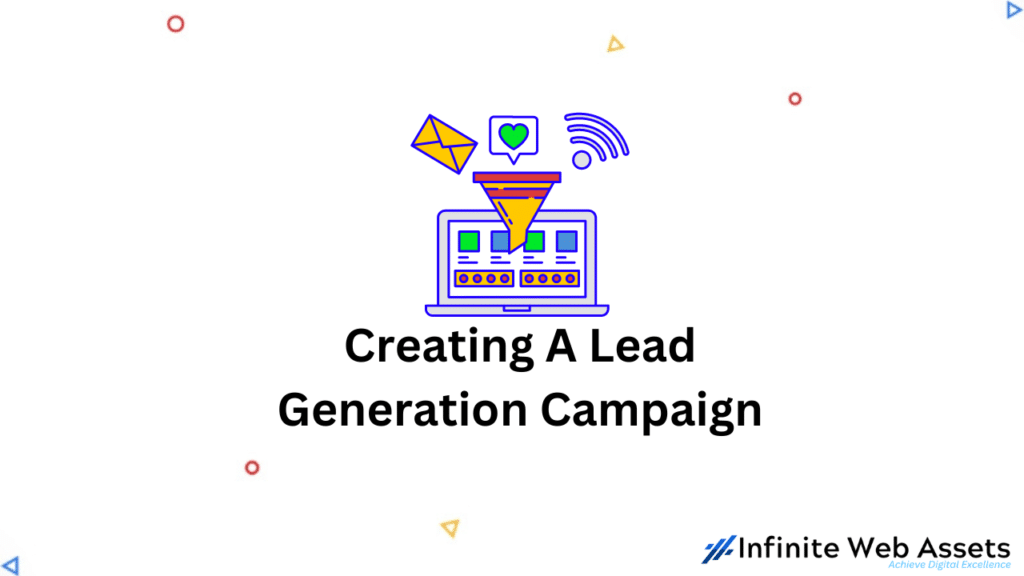
To create a successful lead generation campaign on Google Ads and generate high-quality B2B leads, it is crucial to understand the platform’s functionalities and adopt best practices.
Understanding the Concept of a Lead Campaign on Google Ads
Creating a lead generation campaign on Google Ads involves several elements such as:
- Selecting the right campaign type, such as search, display, or video
- Defining your target audience
- Setting up appropriate bidding strategies
- Crafting compelling ad copy
Elements of a Successful Lead Generation Campaign
To generate high-quality leads, your campaign should have:
- Well-researched keywords: Keywords are one of the most important parts of a campaign to get new leads. They help you reach the right people, improve your chances of being found, and give you information about what your target audience is looking for. You can look up keywords with tools like Google Keyword Planner, SEMrush, and Ahrefs. These tools will help you find the keywords that are important to your business, as well as the number of searches, competition, and cost-per-click for each (CPC). You should try to focus on long-tail keywords that are relevant to your business, have low competition, and get a lot of searches. This will make it easier for you to reach your target audience and increase your chances of getting leads.
- Relevant ad copy and calls-to-action: People who might become leads will first see your ad copy and calls to action. They need to be interesting and relevant to the people you want to reach. Your ad copy should make it clear how valuable your business is, and the call to action should be clear and easy to understand. For example, if you are offering a free trial, your call-to-action could be “Start your free trial now.” Your ad copy and calls to action should be tailored to each channel you use so that they work best on each one.
- Optimized landing pages: Landing pages are an important part of a campaign to get more leads. When a person clicks on your ad, they will land on one of these pages. To get the most out of your landing pages, you should make sure they are clean, clear, and easy to use. Your ads and calls to action should have the same message as your landing pages. They should also have a strong headline, bullet points that list the benefits of your offer, and a clear call to action. Also, it is important to have a form on your landing page where leads can enter their information so you can start turning them into customers.
Setting up your Target Audience and Aligning Goals
To appeal to your ideal audience, it is essential to understand their needs, preferences, and demographic information. This information can be used to customize and align your campaign goals accordingly.
Integrating Best Practices for B2B Lead Campaigns in Google Ads
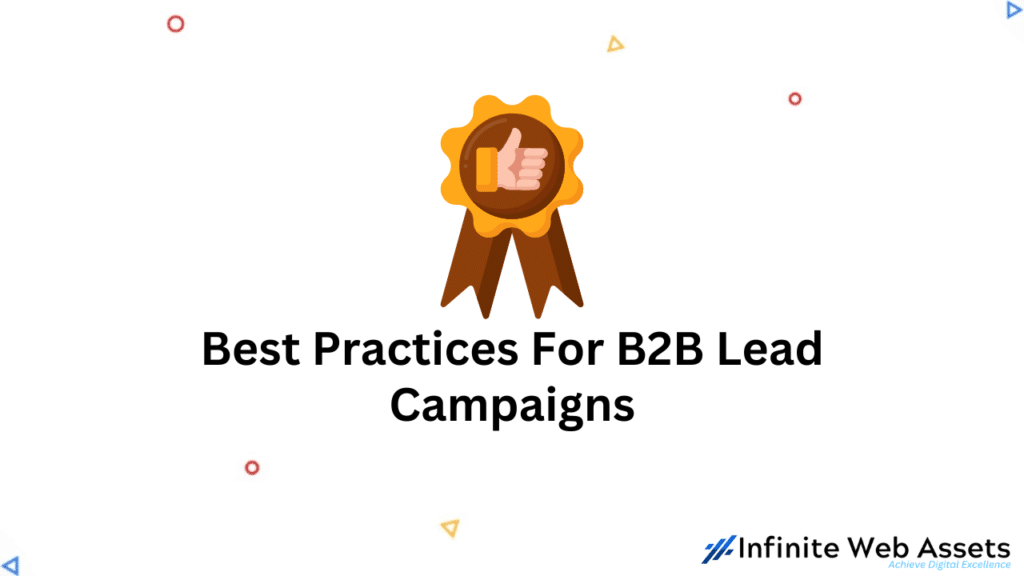
Integration of best practices for B2B lead campaigns into Google Ads is a necessary step for lead generation success. When compared to B2C campaigns, B2B lead campaigns are different because the decision-making process is longer and more complicated. It needs a custom approach that takes into account what B2B customers want and need.
Using Ad Formats Tailored for B2B Lead Generation
Different ad formats, such as text ads, responsive display ads, and video ads, cater to various aspects of B2B lead generation. One popular choice for B2B marketers is the Google Display Network, which allows businesses to run display campaigns that can reach qualified leads on relevant websites.
Leveraging Ad Extensions to Enhance Lead Generation Results
Ad extensions, such as sitelinks, callouts, and structured snippets, can enrich your ads with additional information and make them more enticing for potential leads, improving their click-through rates (CTR) and overall lead generation performance.
The Benefits of Using Google Ads for B2B Lead Generation
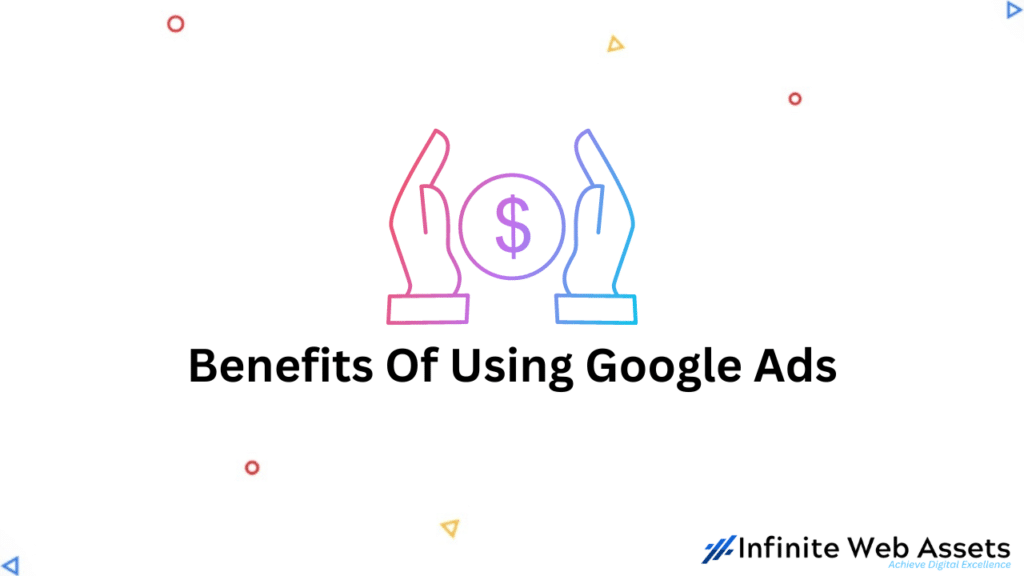
Google Ads offers numerous benefits when used for B2B lead generation, such as enhanced targeting capabilities, adjustable budgets, and performance tracking features. It is essential to understand these benefits to develop an effective ads campaign and generate more leads.
Enhanced Targeting Capabilities for Better Audience Reach
Businesses can accurately target their audience using Google Ads based on various criteria like demographics, interests, and search behavior, ensuring their campaigns reach the desired audience.
Adjustable Budgets for a Scalable Marketing Strategy
Google Ads allows you to set and adjust budgets according to your marketing goals and the desired level of spending. You can also control your bids for each keyword or ad, thereby optimizing your campaign costs per lead.
Measuring and Optimizing your Google Ads Campaigns for Maximum ROI and Lead Generation
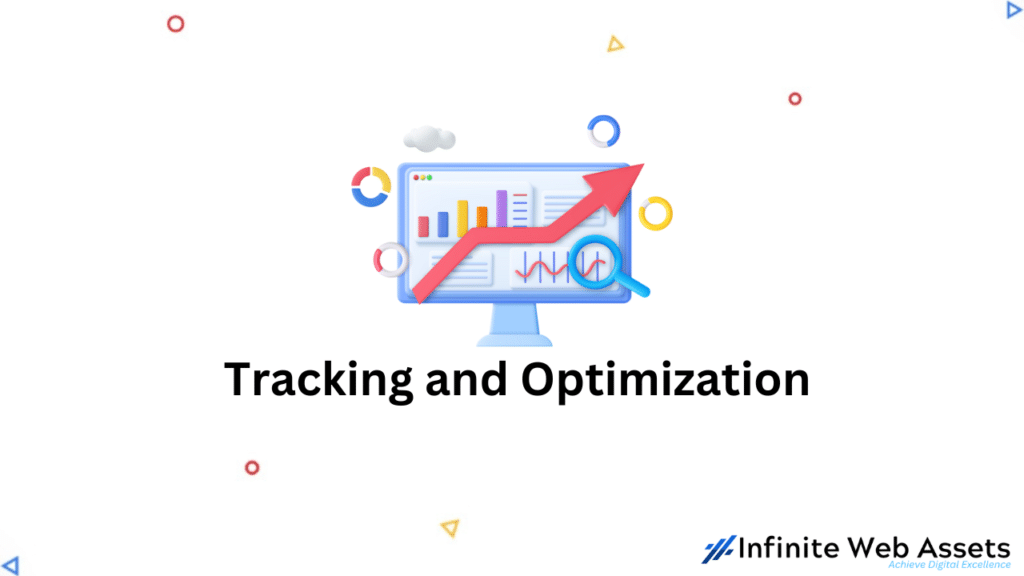
Google Ads provides several tracking and optimization features designed to help you get the most out of your B2B lead generation campaigns.
Monitoring your Campaign Performance with Advanced Analytics
Using conversion tracking and Google Analytics, you can monitor your campaign performance and make data-driven decisions to optimize your ads, bids, and targeting.
Employing Optimization Techniques to Maximize Lead Generation and ROI
Optimizing your campaign from ad copy to landing pages and bidding strategies will ensure you generate high-quality and cost-effective leads. Additionally, focusing on improving your quality score helps lower costs while improving ad positions.
Building a Successful B2B Lead Generation Strategy with Google Ads

Companies looking to generate more leads with Google and create a holistic B2B lead generation approach should regularly evaluate and optimize their campaigns. Continuously refining your strategies and leveraging the power of Google Ads will ensure your business generates high-quality leads.
Advanced Techniques to Boost B2B Lead Generation with Google Ads
To drive increased lead generation, B2B companies can leverage advanced Google Ads techniques like remarketing and automation for improved results.
Leveraging Remarketing Strategies for Higher Conversion Rates
Remarketing campaigns enable you to target potential leads who have previously interacted with your website or ads. Implementing remarketing in your B2B lead generation strategy significantly increases the chance of converting these prospects into qualified leads.
Utilizing Google Ads Automation for Efficient B2B Lead Generation
Google Ads automation helps streamline your campaigns and optimize your bids, ad scheduling, and more, ensuring you reach your target audience more efficiently and generate more leads in the process.
Integrating Google Ads with Your Overall B2B Marketing Efforts
To maximize the potential of Google Ads for lead generation and create a comprehensive B2B marketing strategy, businesses need to integrate their paid search efforts with other marketing channels, including content marketing, SEO, email marketing, and social media.
Tips and Best Practices for Sustained B2B Lead Generation Success with Google Ads
Continuously testing and refining your ad creatives, monitoring industry trends, and staying up-to-date with Google Ads product updates will ensure your B2B marketing efforts generate the highest quality leads possible.
Ending Thoughts: Mastering B2B Lead Generation Using Google Ads
Embracing the challenges and opportunities of B2B lead generation with Google Ads is an essential component for businesses looking for sustainable growth. Understanding the platform’s capabilities and integrating it with your overall marketing strategy will facilitate long-term success and high-quality lead generation for your business.

